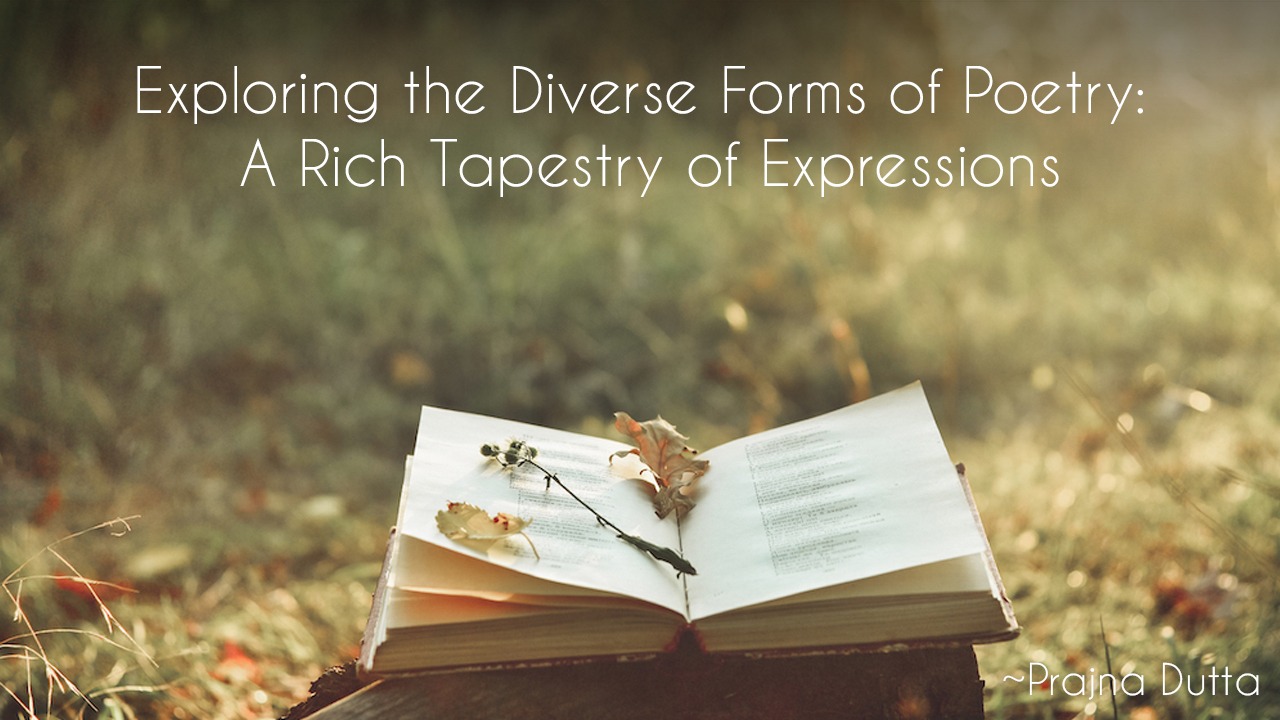Introduction:
Poetry, the art of words, has captivated and intrigued humanity for centuries. It serves as a powerful medium for creative self-expression, allowing poets to weave emotions, ideas, and narratives into a concise yet profound composition. Throughout history, poets have experimented with various forms of poetry, each with its own unique structure, rhythm, and purpose. In this article, we will delve into some of the most prominent forms of poetry, exploring their characteristics and providing examples that showcase their beauty and versatility.
1. Sonnet:
The sonnet is a 14-line poem that originated in Italy during the Renaissance. It follows a strict rhyme scheme and meter, usually iambic pentameter. The two most famous types of sonnets are the Petrarchan (or Italian) sonnet and the Shakespearean (or English) sonnet. The Petrarchan sonnet consists of an octave (eight lines) and a sestet (six lines), while the Shakespearean sonnet comprises three quatrains (four-line stanzas) and a concluding couplet. Sonnets often explore themes of love, beauty, and the complexities of human emotions.
Example:
Shakespearean Sonnet (Sonnet 18):
"Shall I compare thee to a summer's day?
Thou art more lovely and more temperate:
Rough winds do shake the darling buds of May,
And summer's lease hath all too short a date."
2. Haiku:
The haiku is an ancient form of Japanese poetry, consisting of three lines with a total of 17 syllables. The first and third lines contain five syllables, while the second line contains seven syllables. Haiku typically focuses on capturing a single moment in nature, evoking emotions and providing insights into the human condition. It celebrates simplicity, often employing vivid imagery and juxtaposition.
Example:
Basho's Haiku:
"An old silent pond...
A frog jumps into the pond—
Splash! Silence again."
3. Free Verse:
Free verse is a form of poetry that lacks a strict meter or rhyme scheme. It breaks away from traditional structures and allows the poet to explore a more flexible and organic style of expression. Free verse emphasizes natural rhythms and patterns and often relies on vivid imagery, metaphor, and personal experiences to convey emotions or ideas. It offers poets the freedom to experiment with line breaks, enjambment, and other literary devices.
Example:
Walt Whitman's "Song of Myself":
"I celebrate myself, and sing myself,
And what I assume you shall assume,
For every atom belonging to me as good belongs to you."
4. Ballad:
Ballad poetry originated in the medieval period and was often sung or recited as a narrative poem. It tells a story, often of love, adventure, or tragedy, and follows a specific rhythmic pattern. Ballads frequently employ dialogue, repetition, and a steady rhyme scheme. They evoke a sense of nostalgia and can be passed down through generations as oral tradition.
Example:
Samuel Taylor Coleridge's "The Rime of the Ancient Mariner":
"It is an ancient Mariner,
And he stoppeth one of three—
'By thy long grey beard and glittering eye,
Now wherefore stopp'st thou me?'"
Conclusion:
The world of poetry is a vast and intricate tapestry woven with an array of diverse forms. From the structured elegance of the sonnet to the minimalist beauty of the haiku, and from the freedom of free verse to the storytelling charm of the ballad, each form brings its own unique flavor and purpose to the world of poetry.
These examples only scratch the surface of the countless forms of poetry that exist. Other notable forms include the villanelle, ghazal, sestina, ode, and many more. Each form presents an opportunity for poets to explore different rhythms, structures, and techniques, allowing them to communicate their thoughts, feelings, and observations in distinct ways.
Poetry, as a form of artistic expression, transcends boundaries and speaks to the depths of human experience. It embraces the power of language to evoke emotions, provoke thoughts, and create lasting impressions. Whether it is a tightly structured sonnet, a brief and poignant haiku, or a free-flowing verse, poetry has the capacity to captivate, inspire, and move its readers.
As you delve into the world of poetry, take the time to explore various forms and experiment with their unique characteristics. Allow yourself to be inspired by the works of renowned poets, but also find your own voice and style. Poetry is an invitation to express oneself authentically, to play with words, and to create something truly extraordinary.
So, embrace the beauty, rhythm, and diversity of poetry. Let the forms guide you, but also let your creativity and imagination soar. Write with passion, honesty, and a willingness to explore the boundless possibilities of language. For in the realm of poetry, you have the power to paint emotions, weave narratives, and touch the hearts of others.
In conclusion, poetry is a vast and enchanting world filled with an incredible range of forms. Each form adds its own distinct flavor and allows poets to communicate their thoughts and emotions in unique ways. So, pick up your pen, embrace the forms, and embark on a poetic journey that will captivate both your soul and the hearts of others.

Comments